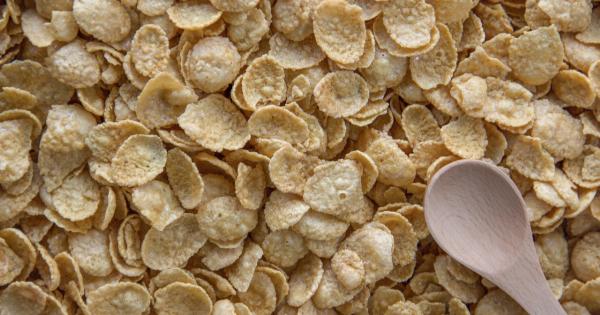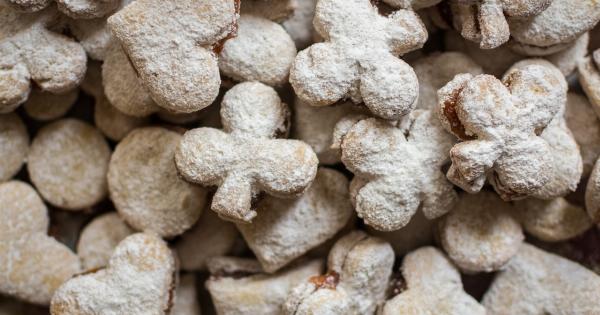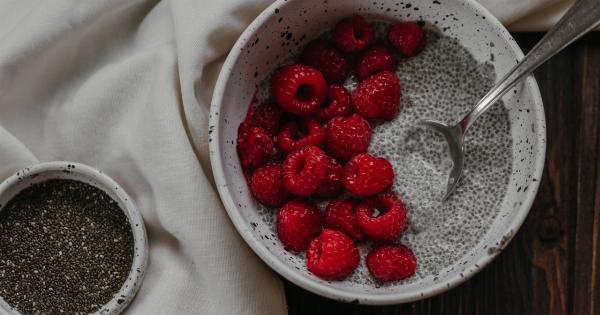Maintaining a balanced and nutritious diet is crucial for overall well-being. However, in today’s fast-paced world, it can be challenging to prioritize healthy eating.
The good news is that with revamped instructions for healthy eating, you can make significant changes to your diet that will have a positive impact on your health. One key aspect of this revamp is reducing sodium intake while simultaneously increasing fiber intake.
In this article, we will explore the benefits of focusing on these two elements and provide you with practical tips and delicious recipes to incorporate into your daily routine.
The Dangers of Excess Sodium
Sodium is an essential mineral required by the body in small amounts. However, excessive sodium intake can lead to various health concerns, including high blood pressure, heart disease, and stroke.
The average daily recommended intake of sodium for adults is less than 2,300 milligrams, which is equivalent to about one teaspoon of salt. Unfortunately, most individuals consume much more sodium than required due to the prevalence of processed and packaged foods in our diets.
Reducing sodium intake can have numerous positive effects on our health. It can help lower blood pressure, reduce the risk of chronic diseases, and improve overall cardiovascular health.
A diet low in sodium can also help prevent kidney problems and reduce water retention in the body.
The Fiber Connection
Fiber is an essential component of a healthy diet, yet it is often overlooked.
A high-fiber diet offers a range of benefits, including improved digestion, increased satiety, better blood sugar control, and reduced risk of heart disease and certain cancers. The recommended daily fiber intake for adults is around 25-38 grams, but studies show that most people fail to meet this target.
By consciously increasing our fiber intake, we can improve our overall well-being and enjoy the many advantages that come with it.
Now that you understand the importance of reducing sodium and increasing fiber, let’s dive into practical tips for achieving these goals.
Practical Tips for Reducing Sodium
- Read Labels: Be mindful of the sodium content in packaged foods. Choose low-sodium or sodium-free alternatives whenever possible.
- Limit Processed Foods: Processed foods are typically high in sodium. Opt for whole, unprocessed foods such as fruits, vegetables, whole grains, and lean proteins.
- Control Seasonings: Use herbs, spices, and citrus juices to enhance flavors instead of relying on salt.
- Cook from Scratch: Preparing meals from scratch gives you full control over the ingredients and allows you to reduce sodium content.
- Experiment with Salt Alternatives: Explore various salt substitutes, such as herbs, spices, vinegar, and citrus, to add flavor to your meals.
Incorporating More Fiber into Your Diet
- Choose Whole Grains: Opt for whole grain bread, pasta, and rice instead of their refined counterparts.
- Include Legumes in Your Meals: Beans, lentils, and chickpeas are excellent sources of fiber. Incorporate them into soups, stews, and salads.
- Introduce More Fruits and Vegetables: These are not only rich in fiber but also packed with essential vitamins and minerals. Aim for a variety of colors to ensure a broad nutrient intake.
- Snack on Nuts and Seeds: Almonds, chia seeds, and flaxseeds are great sources of fiber and healthy fats. Add them to your yogurt, smoothies, or enjoy them as a standalone snack.
- Prepare Smoothies: Blend fruits, vegetables, and a handful of spinach or kale to increase your fiber intake in a delicious and refreshing way.
Delicious Recipes for a Healthy Diet
Recipe 1: Quinoa Salad with Roasted Vegetables
Ingredients:.
- 1 cup cooked quinoa
- Assorted vegetables of your choice (bell peppers, zucchini, eggplant, cherry tomatoes)
- 2 tablespoons olive oil
- 1 tablespoon balsamic vinegar
- Salt and pepper to taste
- Fresh herbs for garnish (such as basil or parsley)
Instructions:.
- Preheat the oven to 400°F (200°C).
- Cut the assorted vegetables into bite-sized pieces.
- Toss the vegetables with olive oil, balsamic vinegar, salt, and pepper.
- Spread the vegetables on a baking sheet and roast for about 20-25 minutes or until tender.
- In a large bowl, combine the cooked quinoa and roasted vegetables.
- Garnish with fresh herbs and serve.
Recipe 2: Chickpea and Vegetable Curry
Ingredients:.
- 1 can of chickpeas, drained and rinsed
- Assorted vegetables (such as carrots, bell peppers, cauliflower, and peas)
- 1 onion, diced
- 2 garlic cloves, minced
- 1 can of coconut milk
- 2 tablespoons curry powder
- 1 teaspoon turmeric
- Salt and pepper to taste
- Fresh cilantro for garnish
Instructions:.
- In a large pot, sauté the onion and garlic until fragrant.
- Add the assorted vegetables and cook for a few minutes until slightly softened.
- Stir in the chickpeas, curry powder, turmeric, salt, and pepper.
- Pour in the coconut milk and simmer for 15-20 minutes.
- Garnish with fresh cilantro and serve with brown rice or quinoa.
Conclusion
Revamping your diet to focus on reducing sodium and increasing fiber can have a profound impact on your health and well-being.
By following the practical tips outlined in this article and incorporating delicious recipes into your daily routine, you can achieve a balanced and nutritious diet. Remember, small changes yield significant results over time, so start making healthier choices today!.






























